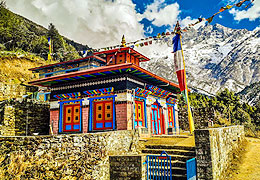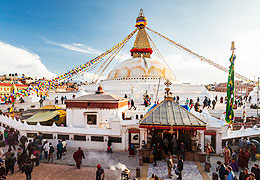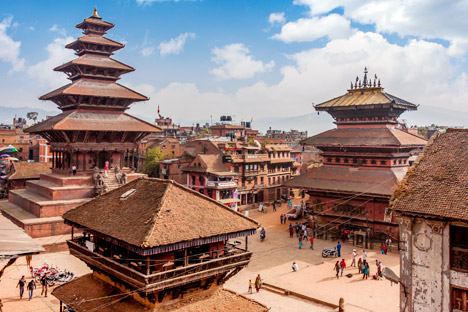Nepal Vacations
- Home
- Vacation Packages
- Nepal Vacations
Nepal Tour Packages
Explore Nepal Tours – Journey Through the Roof of the World
Nepal, your gateway to an awe-inspiring adventure through the breathtaking landscapes and rich culture of Nepal. Nepal, a landlocked country nestled in the Himalayas, is renowned as the “Roof of the World.” Join us as we embark on an exploration of this enchanting and diverse nation.
Our Nepal Tours
Tailored Experiences: Our Nepal Tours are meticulously crafted to cater to all types of travelers. Whether you’re a nature lover, a culture enthusiast, or a trekking enthusiast, our tours have something special for everyone. From towering mountains to vibrant culture, Nepal has it all.
Himalayan Heights: Begin your journey by exploring the majestic Himalayan peaks. Traverse through the Annapurna and Everest regions, embark on the legendary Everest Base Camp trek, and savor the serene beauty of the Himalayas.
Cultural Immersion: Immerse yourself in the rich cultural tapestry of Nepal. Visit ancient temples and monasteries, witness traditional dance forms, explore the bustling local markets, and savor the flavors of Nepali cuisine, known for its diverse and delicious dishes.
Adventure Awaits: For the adventure enthusiasts, Nepal offers thrilling opportunities. Engage in trekking, white-water rafting, paragliding, and wildlife safaris in the lush national parks.
Why Indian Visit?
We are dedicated to delivering an immersive and unforgettable travel experience. Our Nepal Tours are designed to connect you with the country’s natural beauty and vibrant culture. We aim to make your journey a seamless blend of adventure, cultural exploration, and relaxation.
Book Your Nepal Tour Today
Explore the wonders of Nepal with us. Immerse yourself in the grandeur of the Himalayas, delve into the cultural richness, and create cherished memories. Choose from our range of Nepal Tours.



